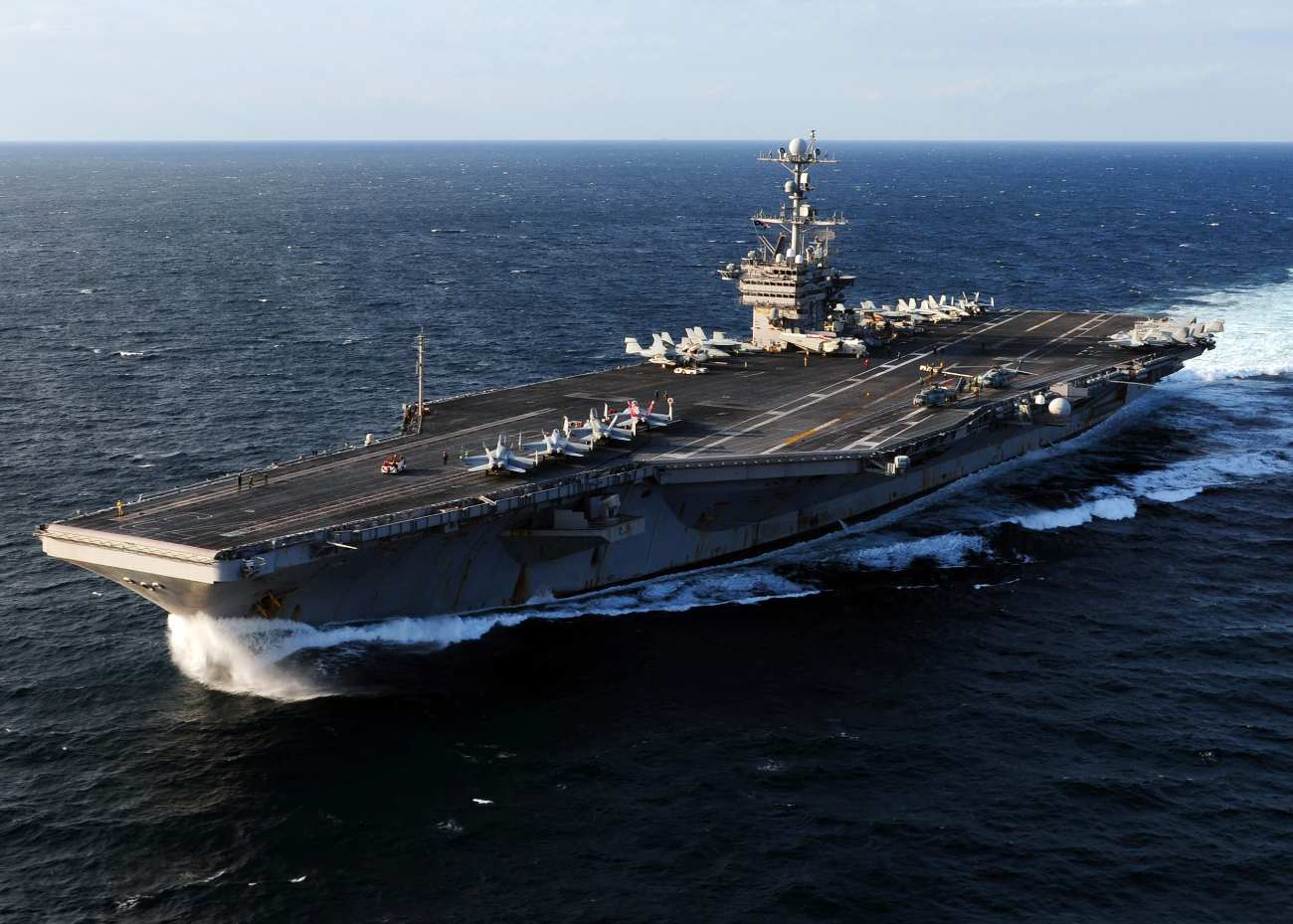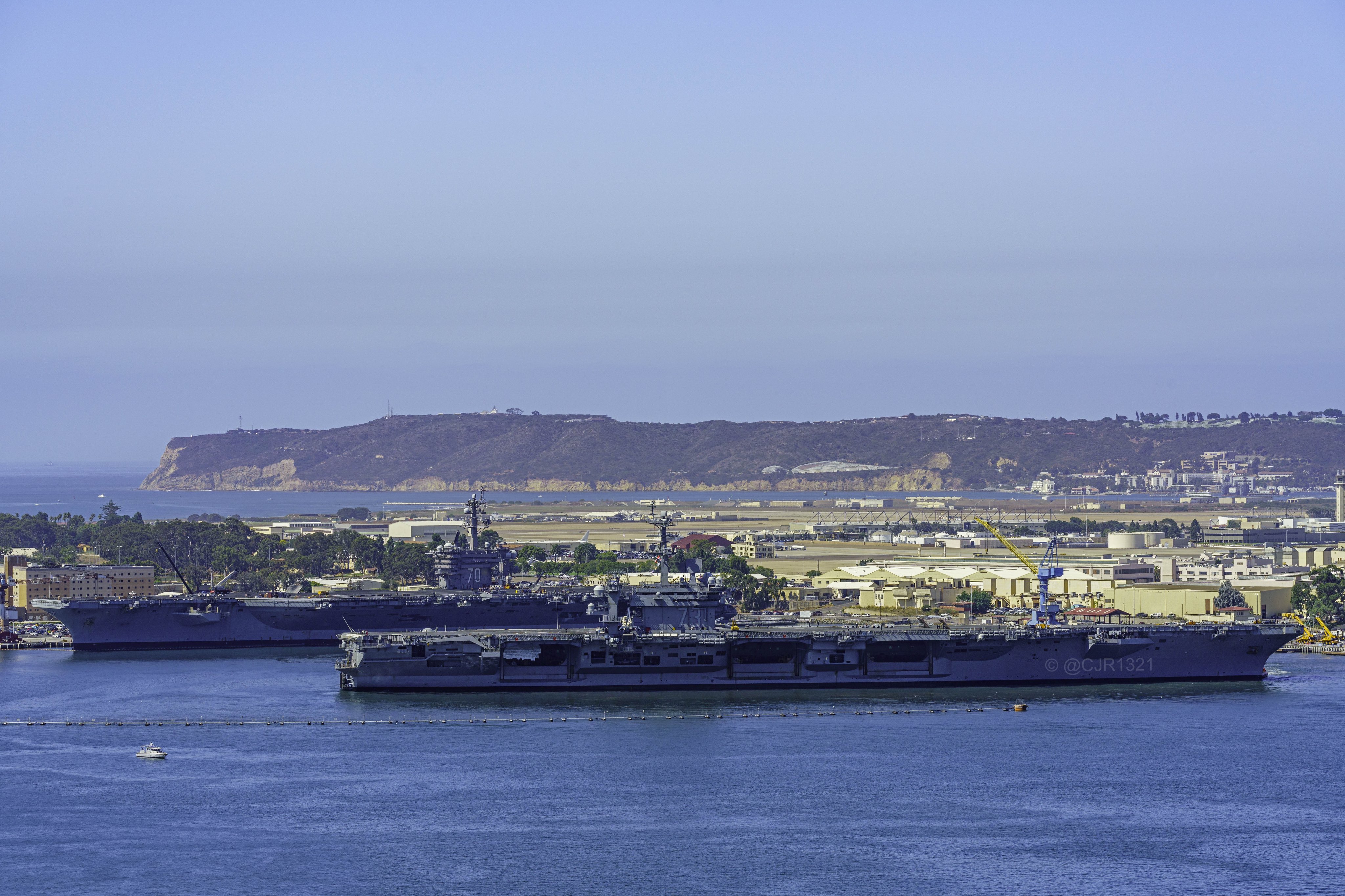Missing In Action! Despite 11 Aircraft Carriers, US Navy Left Without Any Carrier In The Pacific; Here’s Why

After the U.S. redeployed the USS Abraham Lincoln (CVN 72) from the Seventh Fleet to the Fifth Fleet in the Middle East, the Navy is left without an aircraft carrier in the volatile Pacific region, where China has been steadily ramping up its military presence.
The U.S. Central Command (CENTCOM) announced last week that the USS Abraham Lincoln aircraft carrier, equipped with F-35 fighter jets, arrived in the Middle East while being escorted by guided missile destroyers. The deployment comes amid the rising threat of an attack on Israel by its adversaries Iran and the Lebanon-based militia Hezbollah.
In anticipation of the attack, the United States redeployed several assets to the Middle East, including fighter jets, submarines, and a host of ships. The USS Abraham Lincoln, for one, has been dispatched from the Indo-Pacific region to join the USS Theodore Roosevelt aircraft carrier, which has been operating under the US CENTCOM since mid-July.
However, the United States’ commitment of resources in defense of its ally Israel has left the Indo-Pacific theatre without a carrier. Like any nation, aircraft carriers play a crucial role in the United States’ foreign policy and power projection. The U.S. boasts the largest fleet of aircraft carriers globally, featuring eleven operational flat-tops equipped with cutting-edge technology.
The absence of a carrier from the U.S. Seventh Fleet, which oversees operations in the Indo-Pacific, has caught the attention of military observers, with some expressing concern and shock. Media reports laid attention to the fact that the USS Ronald Reagan (CVN 76) departed Yokosuka, Japan, at the same time as the USS Abraham Lincoln departed for the Middle East.
AfriPrime App link: FREE to download...
https://www.amazon.com/Africircle-AfriPrime/dp/B0D2M3F2JT
The USS George Washington (CVN 73), set to replace the USS Ronald Reagan, is currently on a planned port visit in San Diego – leaving the Indo-Pacific without an aircraft carrier. The remaining carriers that could have been deployed to the Pacific are either in port or undergoing maintenance after an enhanced and rigorous period of activity.
For instance, the USS Carl Vinson, one of the six carriers in the Pacific, recently participated in RIMPAC 2024; the USS Nimitz just finished a six-month planned incremental availability period for maintenance; and the USS Ronald Reagan just finished a homeport shift to Naval Base Kitsap.
While the report stated that the USS George Washington would stay in San Diego until the crew and equipment swap from USS Ronald Reagan was completed, some open-source intelligence analysts and ship-tracking accounts on social media site X claimed that the carrier had departed San Diego on August 22.
However, if the deployment to Yokosuka, Japan, is delayed, the Indo-Pacific would be without a U.S. carrier for about three weeks.
Military observers have lamented the absence of a carrier from the region, which comes at a time of rising tensions between China and the Philippines and enhanced military activity by the Chinese forces in the Taiwan Strait. The gap is also in stark contrast with the deployment of multiple aircraft carriers in the region earlier this year.
The U.S. Navy’s carrier fleet is working hard to maintain a highly sought-after presence across the globe, but it has been overstretched due to the tensions in the Middle East and the unavoidable maintenance schedules. Some observers on social media stated that this reflected a resource crunch in the U.S. arsenal.
U.S. Navy Has A Carrier Gap
The recent repositioning of the USS Abraham Lincoln Carrier Strike Group has left a gap in the U.S. Navy’s presence in the Western Pacific, an area that is becoming increasingly tense due to geopolitical issues.
AfriPrime App link: FREE to download...
https://www.amazon.com/Africircle-AfriPrime/dp/B0D2M3F2JT
This shift is driven by challenges to the U.S. Navy’s traditional supremacy posed by North Korea, an increasingly assertive China, and a bold Russia.
Notably, China has been intensifying its naval activities in the region, frequently holding exercises near contested territories.
The lack of aircraft carriers, the most powerful tool for military presence in distant waters in the Indo-Pacific, coincides with China’s increased military actions in the South China Sea, near the Western Pacific.

This raises fears that the situation could create an opportunity for the People’s Liberation Army Navy (PLAN) to assert its influence in the area. Earlier this month, Chinese carrier Shandong sailed in the Philippines Sea along with three warships.
Some experts have voiced concern that it could allow Beijing to underscore its claims that Washington cannot fully meet its military commitments in Asia, potentially undermining the credibility of U.S. defense assurances to its regional allies.
However, the Philippines-based military analyst Miguel Miranda earlier disregarded concerns that the U.S. Navy’s withdrawal would erode U.S. influence abroad. Such presumptions, he claimed, are “absurd,” as the U.S. and China continue to have leadership and diplomatic ties, which lessens the possibility of open hostilities.
Miranda said there is a full calendar of multinational exercises this year, demonstrating the continued strength of U.S. military involvement in the Asia-Pacific region. He challenged the notion that U.S. carriers are crucial for deterring Chinese provocations towards U.S. allies, arguing that the Chinese do not increase their risks in the absence of U.S. carriers.
However, some analysts predict that while the absence of carriers from the region does not pose an immediate risk, it has long-term repercussions. Naval defense expert Alex Luck wrote on X: “As I’ve opined before, the immediate presence gap is probably not a serious concern. But either way, deployments elsewhere still wear down hulls and crews, with the obvious repercussions down the road, where availability is concerned.”
The largest fleet of carriers in the world has its constraints. Only a handful of these carriers are ready for swift operations, as many are either undergoing maintenance or returning from extended missions.
With no available carrier in the Indo-Pacific region, which is still grappling with the challenges posed by an assertive China, the U.S. Navy must effectively manage its scarce carrier resources.
AfriPrime App link: FREE to download...
- Questions and Answers
- Opinion
- Story/Motivational/Inspiring
- Technology
- Art
- Causes
- Crafts
- Dance
- Drinks
- Film/Movie
- Fitness
- Food
- Игры
- Gardening
- Health
- Главная
- Literature
- Music
- Networking
- Другое
- Party
- Religion
- Shopping
- Sports
- Theater
- Wellness
- News
- Culture
- War machines and policy


